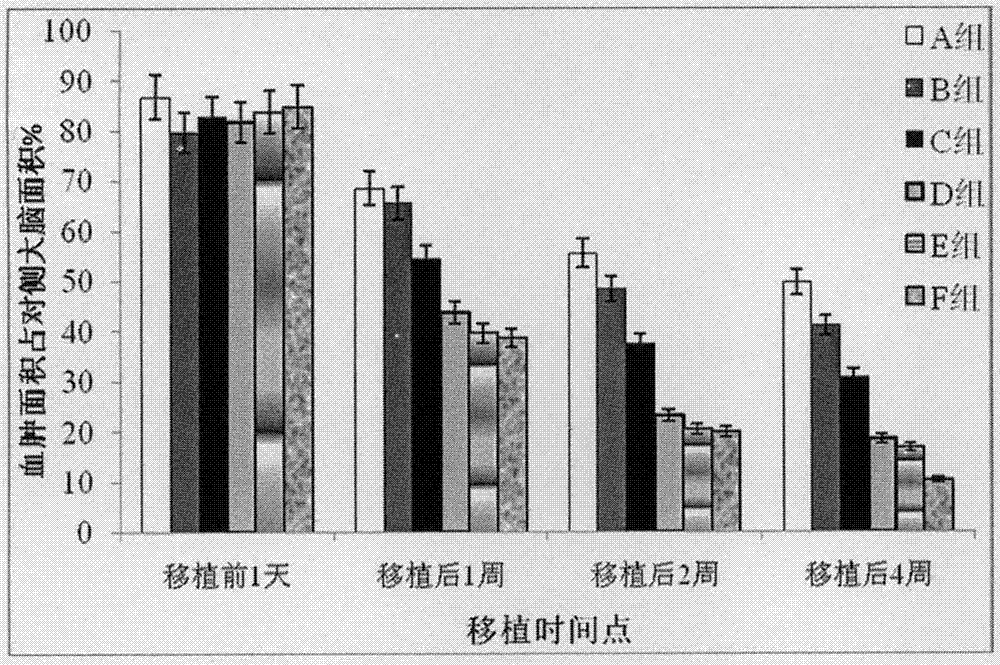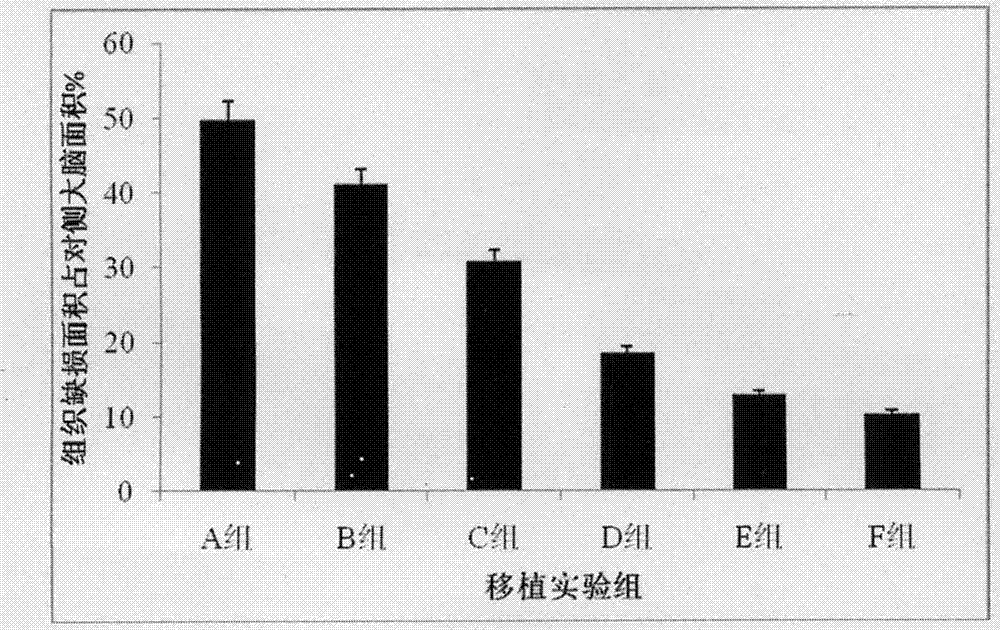Functional tissue engineering material for nerve repair, preparation method and use thereof
A functional organization and nerve repair technology, applied in the field of nerve function repair and inhibition of nerve re-injury, can solve the problems of excessive use of neurotrophic factors, low therapeutic effect, and inability to maintain effective therapeutic concentration
- Summary
- Abstract
- Description
- Claims
- Application Information
AI Technical Summary
Problems solved by technology
Method used
Image
Examples
preparation example Construction
[0028] The preparation method of functional tissue engineering material is as follows: Traut's reagent and Sulfo-SMCC are dissolved in phosphate buffered saline (PBS, pH8.0, 4mM EDTA) and PBS (pH7.2, 4mM EDTA) respectively, will prepare Soak human amniotic membrane in PBS (pH8.0, 4mM EDTA), react Traut’s reagent with human amniotic membrane overnight at 4°C, remove excess cross-linking agent, and wash 3 times with PBS (pH7.2, 4mM EDTA) In addition, the calpain inhibitor and Sulfo-SMCC were reacted at room temperature in PBS (pH7.2, 4mM EDTA) for 30 minutes, then reacted with the human amniotic membrane treated with Traut's reagent at room temperature for 2 hours, and then reacted with PBS (pH7 .2, 4mM EDTA) to wash thoroughly, and use 5% glycine to neutralize excess reactive groups, obtain the human amniotic membrane immobilized with the inhibitor of calpain;
[0029] Take human amniotic membrane immobilized with calpain inhibitor and place it in a 6-well plate, add one or mor...
Embodiment 1
[0035] Preparation of human amniotic membrane
[0036] Amniotic membrane material: Human amniotic membranes are from fetal membranes from healthy mothers without virus infection (informed consent has been signed with the donor), namely hepatitis B 5 items, human hepatitis C virus, hepatitis C virus, human immunodeficiency virus, human immunodeficiency virus, Other relevant indicators of infectivity, including syphilis and human papillomavirus, were negative.
[0037] Human amniotic membrane containing antibiotics (gentamicin 4000U / ml, penicillin 500U / ml, streptomycin 500μg / ml) 1×PBS (pH7.2) to wash away the blood clot of the placenta, bluntly strip the amniotic membrane, and make it with The chorion was separated, rinsed with PBS containing antibiotics, soaked for 20min, and spread on the nitrocellulose membrane with the epithelial side up. Trim the above paper sheet with amnion attached to a small piece of 2.5cm×2.5cm. Rinse twice with PBS, soak in DMEM / F12 culture medium (...
Embodiment 2
[0040] Preparation of GDNF fusion protein containing collagen-binding domain CBD
[0041] After designing and synthesizing primers with biological software Primer5.0, taking GDNF as an example, the TKKTLRT gene sequence of CBD was introduced into the upstream primer of GDNF,
[0042] Upstream primer 1: 5'-GGTCTACGGAGACCGGATCCG-3';
[0043] Upstream primer 2: 5′-CATATGACTAAGAAAACCCTGCGTACTGGGGTCTACGGAG-3′;
[0044] Downstream primer: 5′-CTCGAG TCTCTGGAGCCAGAGATCT-3′
[0045] The GDNF mature fragment was amplified from human cDNA by using the upstream primer 1 and the downstream primer. The PCR amplification reaction solution was: 2μL 10×PCR buffer (Dalian TaKaRa Company), 2U-5U Taq enzyme (Dalian TaKaRa Company), 0.2~ 1.0 mM dNTPs (Dalian TaKaRa Company) and 0.2 μmol of upstream primer 1 and downstream primer (synthesized by Invitrogen, USA); put the prepared system into a PCR machine (Boao Company), and the application amplification program is as follows: 94 ° C 5 minutes; ...
PUM
 Login to View More
Login to View More Abstract
Description
Claims
Application Information
 Login to View More
Login to View More - R&D
- Intellectual Property
- Life Sciences
- Materials
- Tech Scout
- Unparalleled Data Quality
- Higher Quality Content
- 60% Fewer Hallucinations
Browse by: Latest US Patents, China's latest patents, Technical Efficacy Thesaurus, Application Domain, Technology Topic, Popular Technical Reports.
© 2025 PatSnap. All rights reserved.Legal|Privacy policy|Modern Slavery Act Transparency Statement|Sitemap|About US| Contact US: help@patsnap.com



